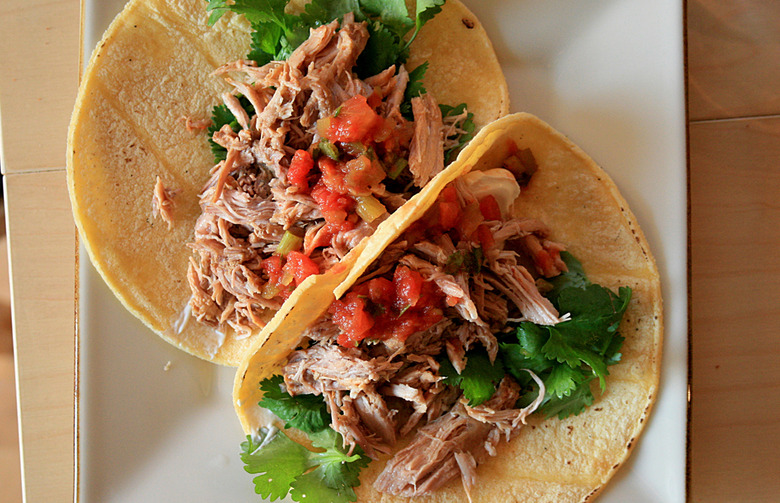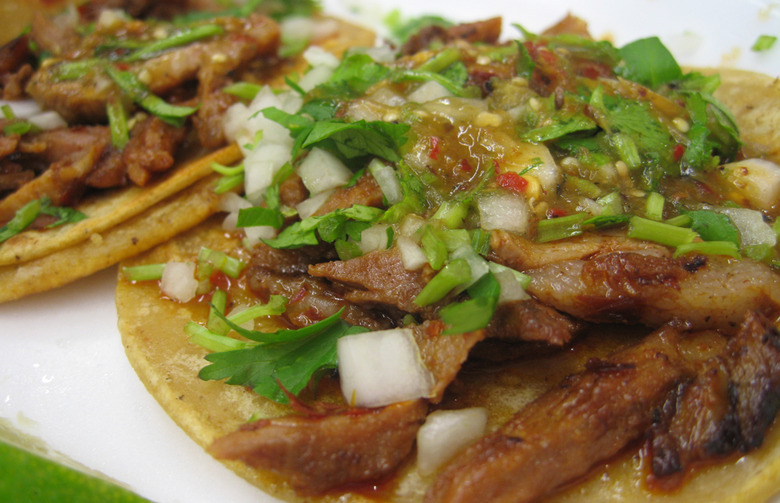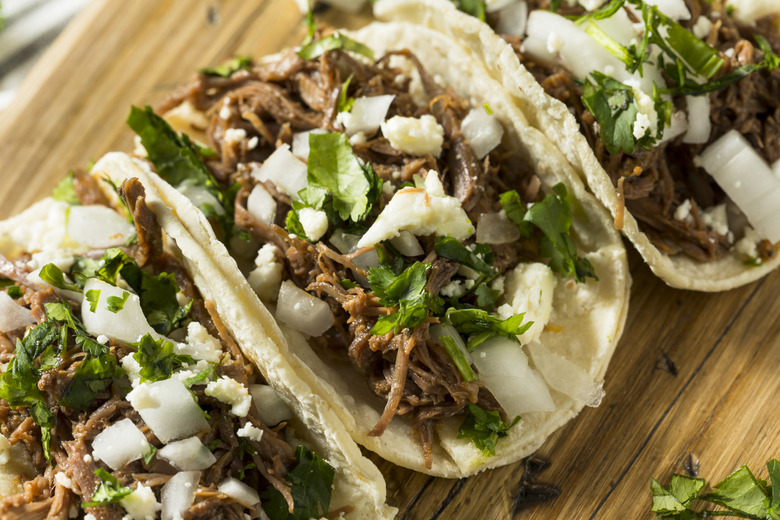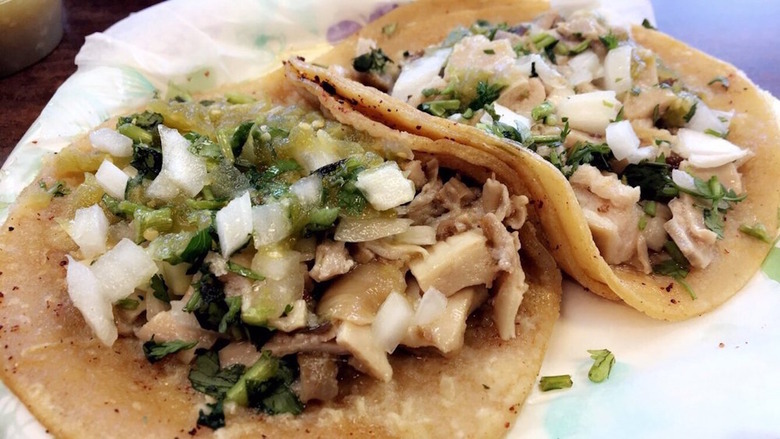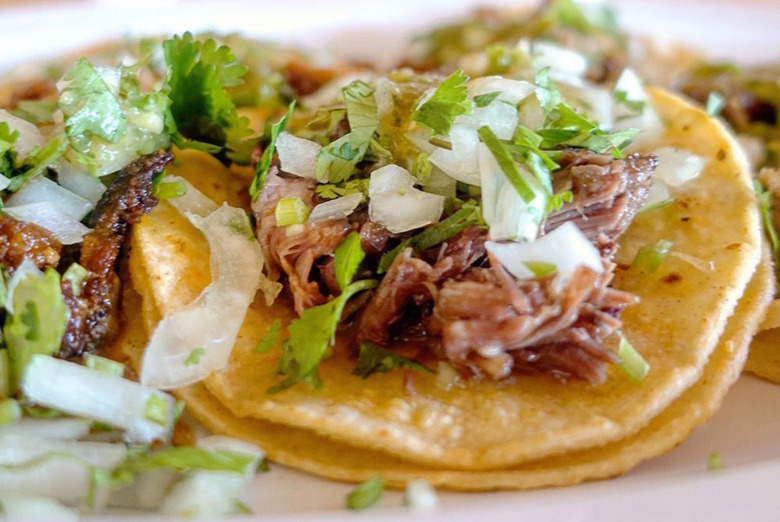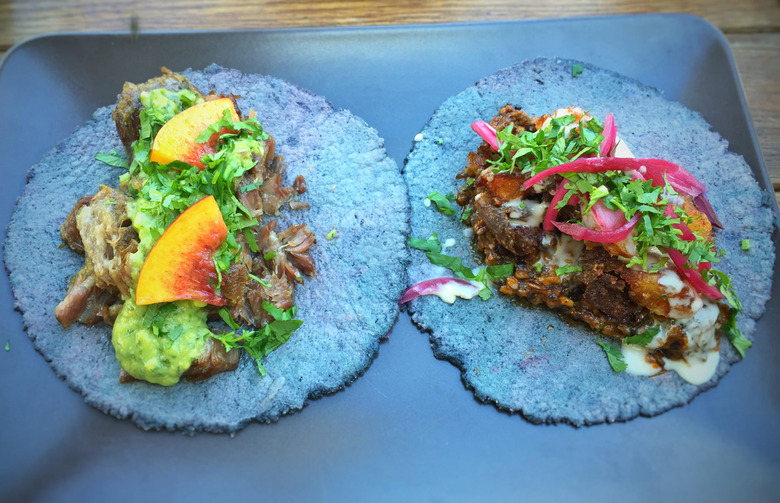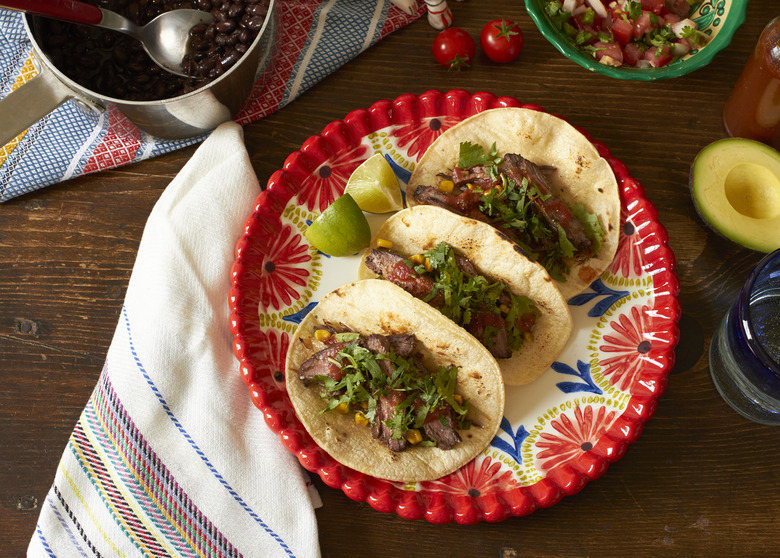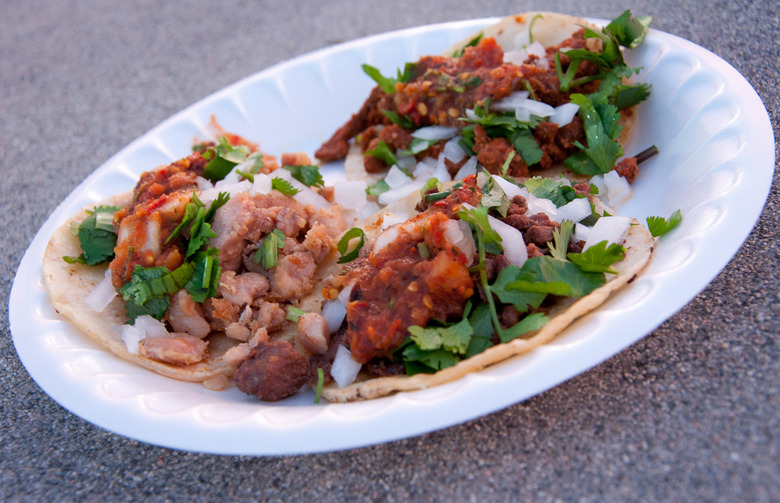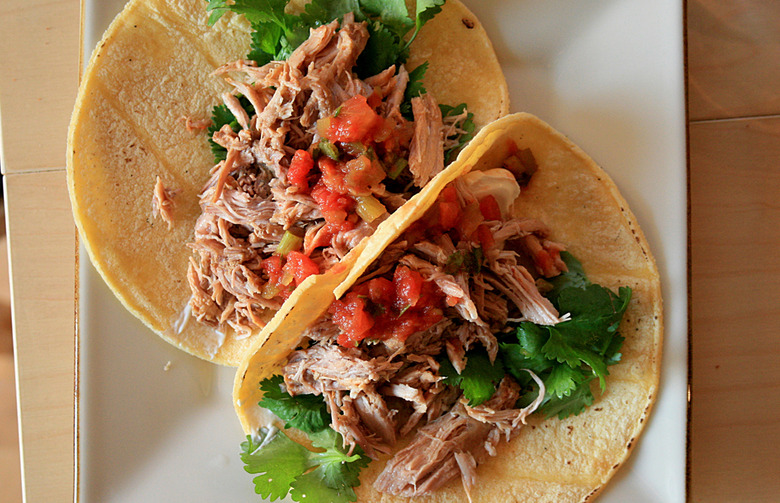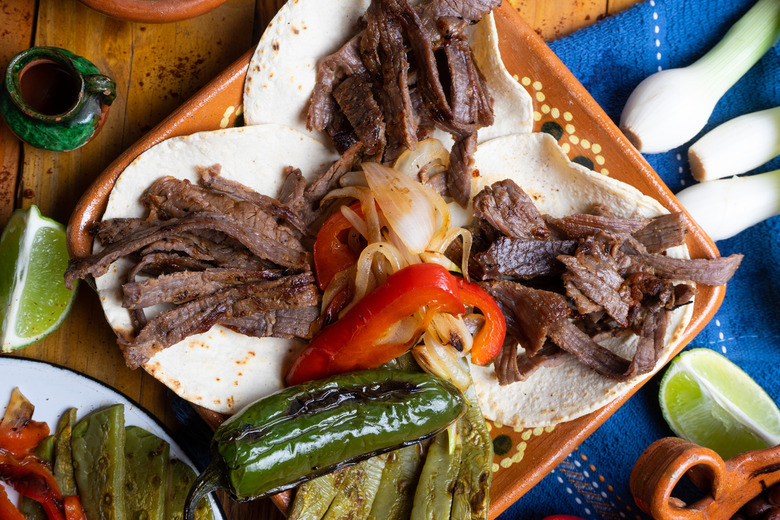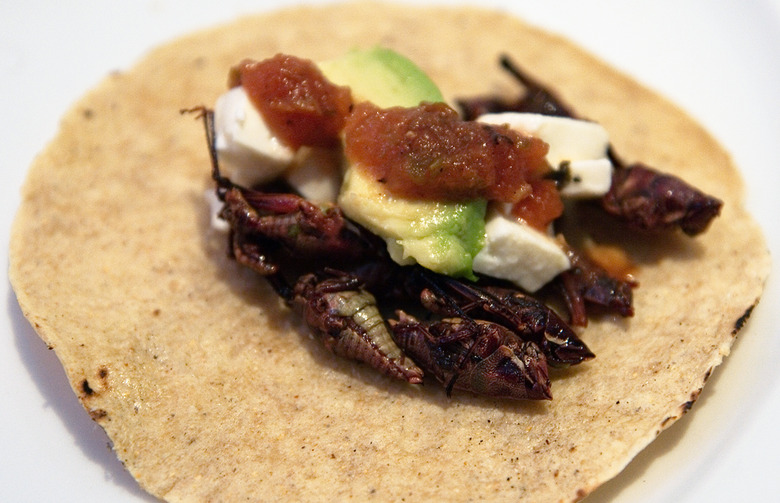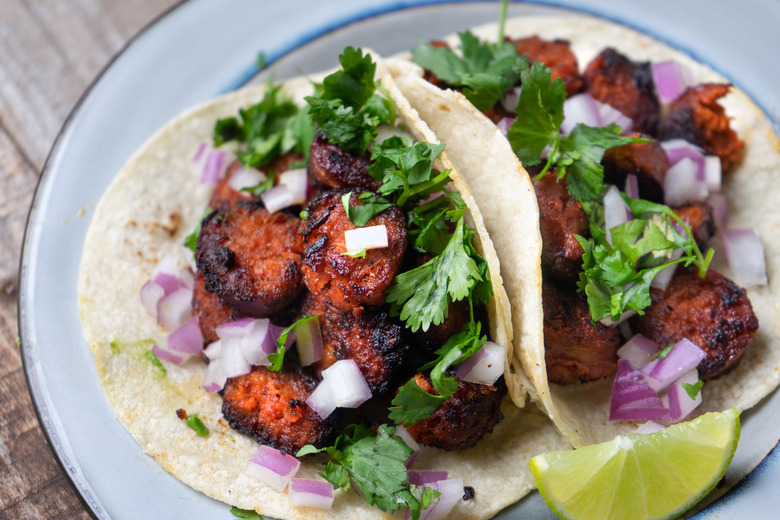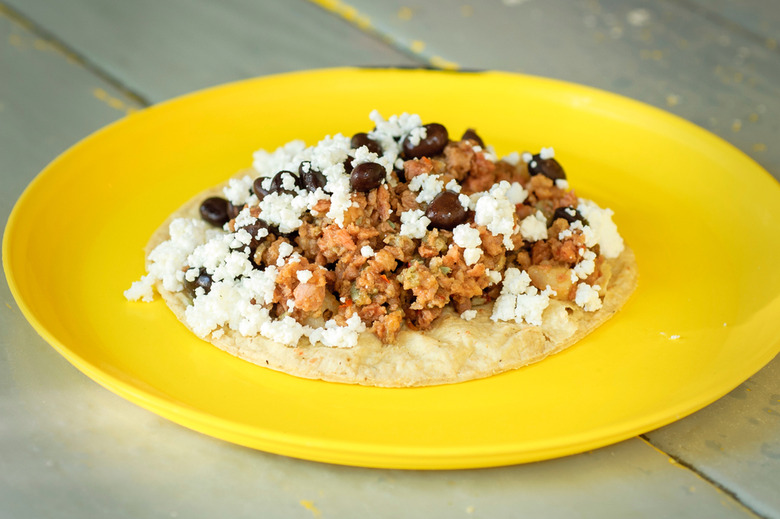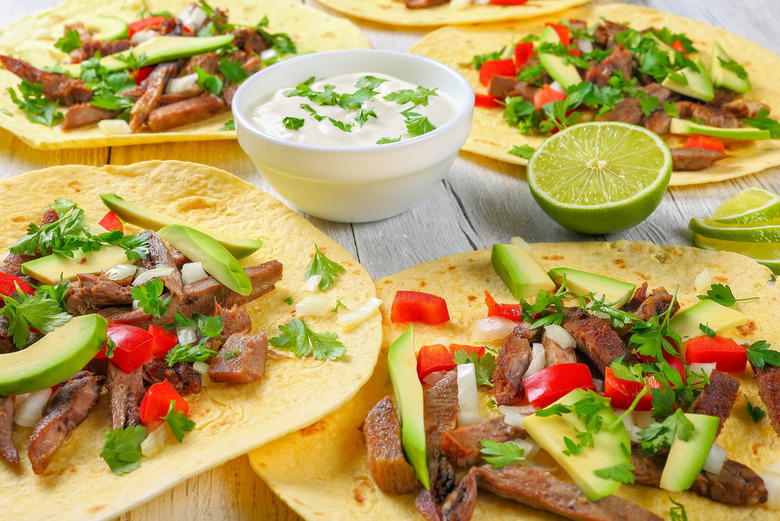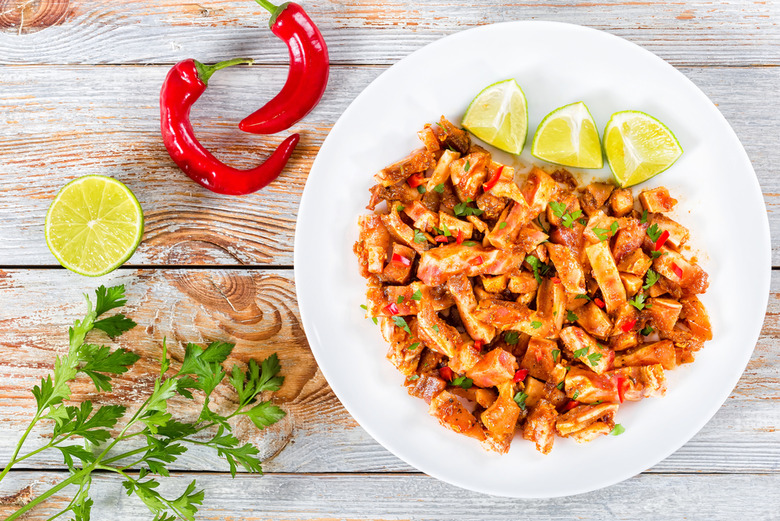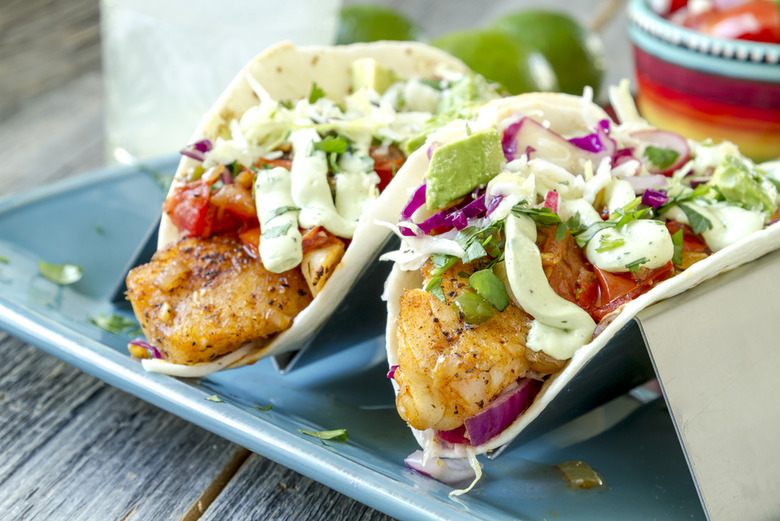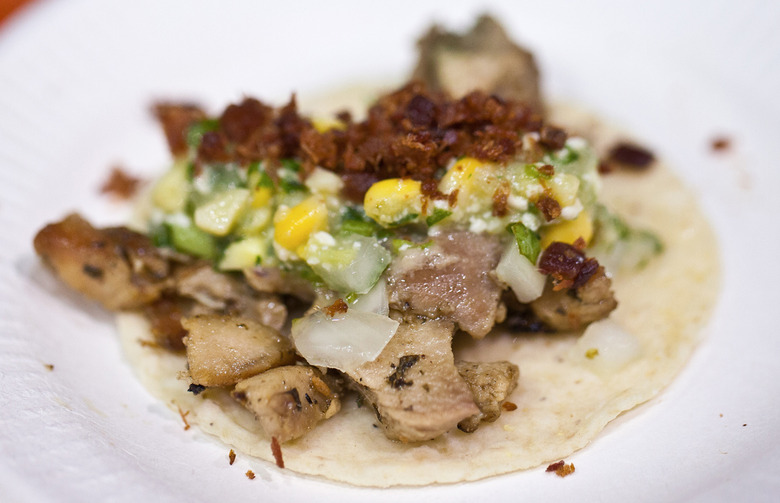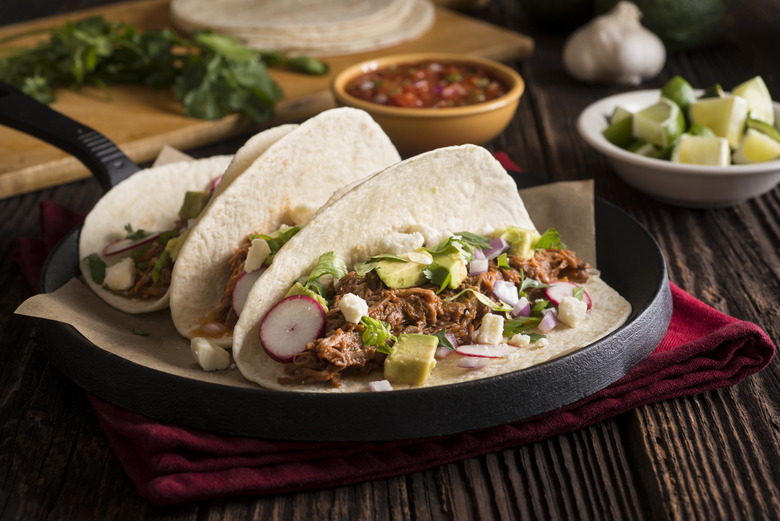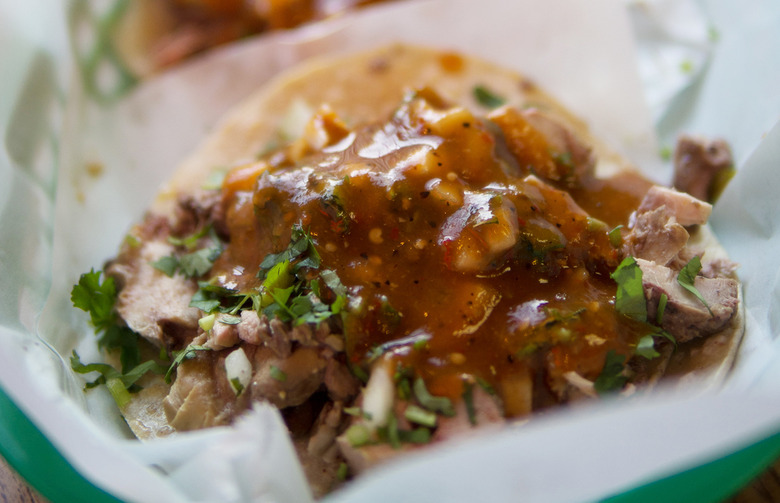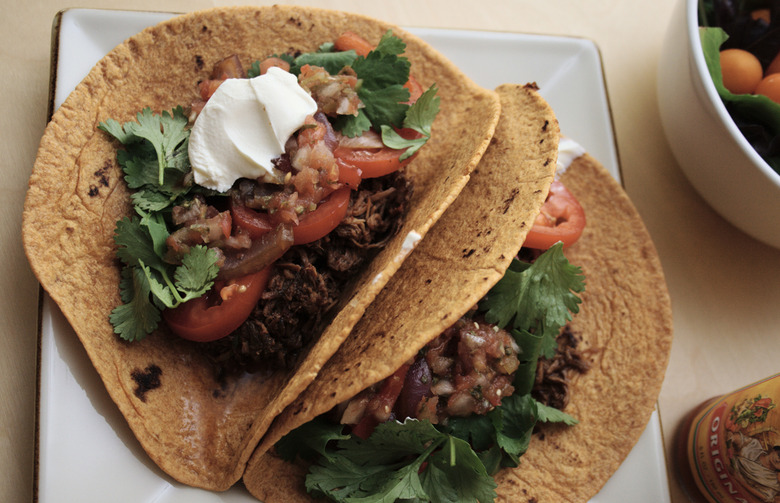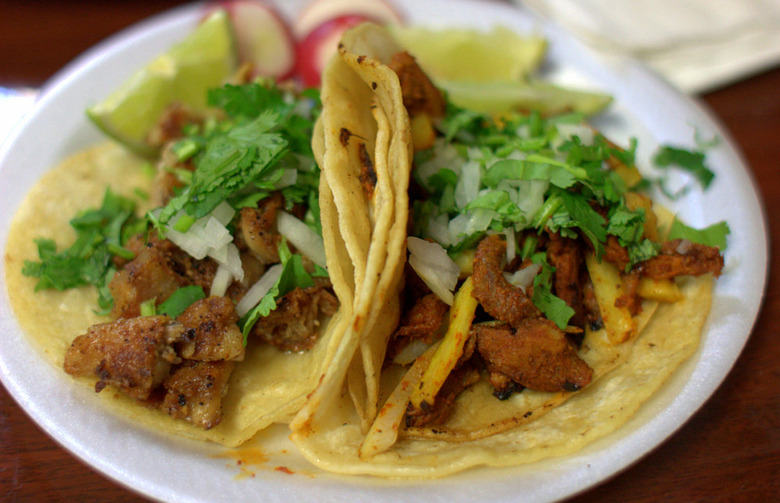A Guide To (Almost) Every Taco Filling
Quick: How many Mexican taco fillings can you name off the top of your head? Four? Five? In reality, there are dozens of taco fillings to be found all across Mexico, using just about every part of just about every animal (and that's not to mention the vegetarian ones). Here are 20.
Al Pastor
"Shepherd style" — thin slices of pork marinated in adobo and then stacked and pressed together on a vertical rotisserie, like those used to cook gyro meat or shawarma. The meat is carved off to order and mixed with pineapple, often cooked on the same spit.
Barbacoa
Buche
Buche is pork throat and stomach, which breaks down during cooking so it's tender and less chewy than tripe.
Cabeza
Cabeza is Spanish word for "head," and to prepare it for tacos, an entire steer head is placed on a steamer or grill and slow-cooked. The meat is then removed and shredded.
Cachete
Consider yourself lucky if you can ask for specific parts of the cabeza; you know you're in a good taquería if you can. If given the option, opt for the cachete, or beef cheeks, sweet and full of flavor. Keep an eye out, too for cachete de cerdo, or pork cheeks.
Carne Asada
Carne asada is made by quickly cooking thin steaks on a hot grill or comal (griddle); it's traditionally diced after cooking.
Carne enchilada
Enchilada here doesn't refer to the dish of that name made with filled rolled tortillas; it simply means "in chile sauce." If you order carne enchilada at a taquería, you'll get a taco filled with chopped pork that's been marinated in and cooked with chile sauce; it's generally one of the spicier options you'll encounter.
Carnitas
Tracing its roots to the state of Michoacân, carnitas is made by cutting pork shoulder into chunks and slowly simmering it in lard until tender, then shredding. The lard is usually melted down in a large copper pot and seasoned with flavorings including chile, cumin, garlic, and oregano. The shredded carnitas is sometimes crisped up on a comal before serving.
Cecina
Cecina is beef or pork that's been salted and pounded thin, then allowed to dry somewhat before being cooked on a comal. It's pleasantly salty and slightly chewier than your traditional carne asada. It's also sometimes dry-cured, like Italian bresaola.
Chapulines
Chapulines are small grasshoppers, popular as taco filling (as well as bar snacks) in parts of Mexico including Oaxaca and Mexico City. After being washed, they're generally seasoned with lime juice, garlic, and salt, and toasted until crunchy on a comal. Some are dyed pinkish-red with food coloring.
Chorizo
As opposed to the cured, dry Spanish sausage of the same name, Mexican chorizo is a fresh pork sausage seasoned with vinegar, garlic, oregano, salt and pepper, thyme, allspice, cloves, and a whole lot of guajillo chiles (individual recipes may vary). In the area around Toluca you'll also find green chorizo, which is traditionally made with pork, tomatillo, cilantro, green chiles, and garlic. The meat is usually removed from the casing, crumbled, and seared up on a comal before being added to a taco.
Cueritos
Cueritos is simply is pig skin. As opposed to pork rinds (chicharrones), which are deep-fried, cueritos are thin strips of skin pickled in vinegar and seasoned with flavorings including pineapple, pepper, cloves, oregano, and chile de árbol.
Lengua
Lengua is beef tongue that's been peeled, cleaned, trimmed, and slowly braised until tender. It's then usually diced or shredded.
Oreja
Oreja is thin strips of pig's ear, slowly braised until they're soft and tender.
Pescado
Fish tacos originated in Baja, the peninsula off the northwest coast of Mexico. They're made with corvina or some other white fish that's been battered and fried (occasionally grilled), and are traditionally topped with shredded cabbage, a thinned guacamole sauce, and a mayonnaise- or sour-cream-based white sauce.
Pollo
Chicken makes its way into tacos in several preparations, among them tinga, braised chicken thighs that have been shredded and doused in either a green tomatillo or red chile sauce, or simply grilled and diced.
Res
Res is beef, usually shin, typically braised or stewed with spices.
Sesos
Sesos are calf's brains, usually braised and seasoned with chile sauce; it tends to have a mushy texture and is mild in flavor.
Suadero
Suadero is a cut of beef between the belly and the leg, usually simply seared or grilled until crispy, then chopped. It tends to have a smoother texture than most other cuts of beef.
Tripas
If you order tripas expecting tripe, you're in for a susprise; tripas are actually the small intestines of the cow, cleaned, cut up, boiled, fried until crisp, and chopped before being added to a taco. If tripe isn't your thing but you're feeling adventurous, try these 12 tacos that break away from tradition.
More from The Daily Meal:
These Are the Ultimate Trader Joe's Dinner Hacks
25 Roast Chicken Recipes You Can't Mess Up
The Best Mexican Restaurant in Every State
21 Great Dishes You Can Make With Supermarket Rotisserie Chicken
20 Reasons to Eat an Avocado Every Day
